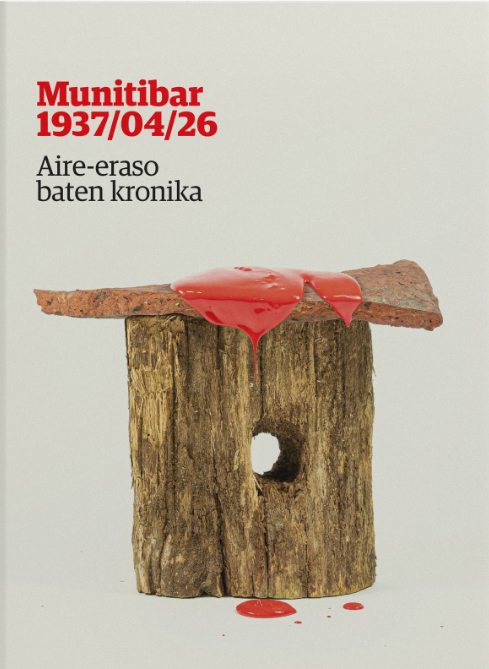
Before Gernika set fire on April 26, 1937, the Condor Legion carried out an airstrike in Munitibar that morning, throwing dozens of bombs at the villagers and refugees who were refugees there, destroying many buildings and subsequently hitting the survivors.
The bombings of Gernika or Durango are well known, but many of those carried out by German aircraft are more unknown, such as Munitibar.
Munitibar  26/04/1937: Chronicle of an aerial assault is presented this Sunday at 12:00 in the Municipal Hall of Munitibar.
26/04/1937: Chronicle of an aerial assault is presented this Sunday at 12:00 in the Municipal Hall of Munitibar.
The book has been elaborated from testimonies and interviews received in recent years, as well as previous published works and obtained documentation: “We have tried to cite everything received to document, preserve and value the collected”, explained from the association.
They wanted to tell as a chronicle what happened on April 26, 1937, “in order to collect individual experiences and build a general account”. In this sense, they have contextualized the days before and after the bombing in order to help understand what happened. Fears, injuries, deaths, burials... also have, therefore, tail.
The book contains information such as the list of munitibartars who had been on the front lines, the refugees in Munitibar and the burial and exhumation carried out. The Memory of the Forgotten explains that they have made an effort to form a “collective narrative”.
In Astigarraga is premiered the documentary Orri zuria bet
The City Hall of Astigarraga has made the documentary "Orri zuria bet", which collects the testimonies of the victims of the 1936 war and of the Franco regime in Astigarraga, which this Friday will be premiered in the theater of the Ribera at 18:30 hours.
The documentary, directed by Eneritz Aulestia and Unai Alberdi, is based on the study by historian Maddalen Laburu. Laburu completed the list of victims in Astigarraga from 1936 to 1945, thanks to a research grant awarded by the City Council. Now, the author himself stands before the camera and talks to several relatives and experts to fade this story.
For the mayor of Astigarraga, Xabier Urdangarin, “building a shared memory of what happened and reconstructing coexistence” are essential initiatives.
Iazko uztailean, ARGIAren 2.880. zenbakiko orrialdeotan genuen Bego Ariznabarreta Orbea. Bere aitaren gudaritzaz ari zen, eta 1936ko Gerra Zibilean lagun egindako Aking Chan, Xangai brigadista txinatarraz ere mintzatu zitzaigun. Oraindik orain, berriz, Gasteizen hartu ditu... [+]
Gogora Institutuak 1936ko Gerrako biktimen inguruan egindako txostenean "erreketeak, falangistak, Kondor Legioko hegazkinlari alemaniar naziak eta faxista italiarrak" ageri direla salatu du Intxorta 1937 elkarteak, eta izen horiek kentzeko eskatu du. Maria Jesus San Jose... [+]
1936ko Gerran milaka haurrek Euskal Herria utzi behar izan zuten faxisten bonbetatik ihes egiteko. Frantzia, Katalunia, Belgika, Erresuma Batua, Sobietar Batasuna eta Amerikako herrialdeetara joandako horien historia jasotzeko zeregin erraldoiari ekin dio Intxorta 1937... [+]
Ezpatak, labanak, kaskoak, fusilak, pistolak, kanoiak, munizioak, lehergailuak, uniformeak, armadurak, ezkutuak, babesak, zaldunak, hegazkinak eta tankeak. Han eta hemen, bada jende klase bat historia militarrarekin liluratuta dagoena. Gehien-gehienak, historia-zaleak izaten... [+]
Pamplona, 1939. At the beginning of the year, the bullring in the city was used as a concentration camp by the Francoists. It was officially capable of 3,000 prisoners of war, at a time when there was no front in Navarre, so those locked up there should be regarded as prisoners... [+]
Segundo Hernandez preso anarkistaren senide Lander Garciak hunkituta hitz egin du, Ezkabatik ihes egindako gasteiztarraren gorpuzkinak jasotzerako orduan. Nafarroako Gobernuak egindako urratsa eskertuta, hamarkada luzetan pairatutako isiltasuna salatu du ekitaldian.